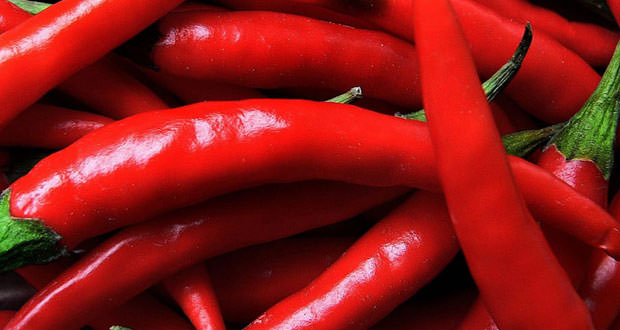The chili and its properties

The chili pepper (Capsicum) is a food that belongs to the family Solanaceae. A native of the Americas, its cultivation has spread worldwide.
Archaeological finds to have recorded the use and cultivation of chili since 5000 BC by the Mexican populations, and perhaps not everyone knows that the first to import it was Cristoforo Colombo around 1493. The chili is the most used after the salt to flavor food, given his unmistakable spicy aroma.
1.) There are different varieties of chili: we can find the Capsicum annuum (most widespread species), the Aji pepper, Capsicum chinense (variety hottest in the world) and Capsicum frutescens (the most famous variety is called Tabasco). Not long ago, the chili is not used only for purpose’s suggestions: Chinese and American researchers have shown that it can be effective against tumors, such as prostate cancer, of course, much feared by men. In addition, the chili also has antioxidant properties, in the sense that seems to inhibit the manifestations cancerous in the stomach. This has been demonstrated only by laboratory experiments have not yet been carried out on man, it can be considered a hypothesis yet to be verified.
2.) The chili contains capsaicin: this is the only substance that can block the release of substance P, a substance that signals the pain to the brain. Other substances in the hot peppers are capsaicin, capsanthin, lecithin, different salts and natural trace elements, essential oil and flavonoids; Finally, remember also vitamin C which, among other functions, plays a vital role in the defense against infection. But the properties of this food are not finished yet: it seems to be able to regulate the blood circulation and which also makes the capillaries more elastic.
3.) Some popular legends give the chili also accentuated aphrodisiac properties; this belief may be more consideration given the presence of vitamin E, which is also known as vitamin of fertility and sexual potency. This myth has not been proven by any scientific research. To conclude this guide, I leave you with a curiosity: the birds, unlike mammals, are not sensitive to the effect of spicy chili; this because capsaicin acts on a receptor that birds do not possess.






